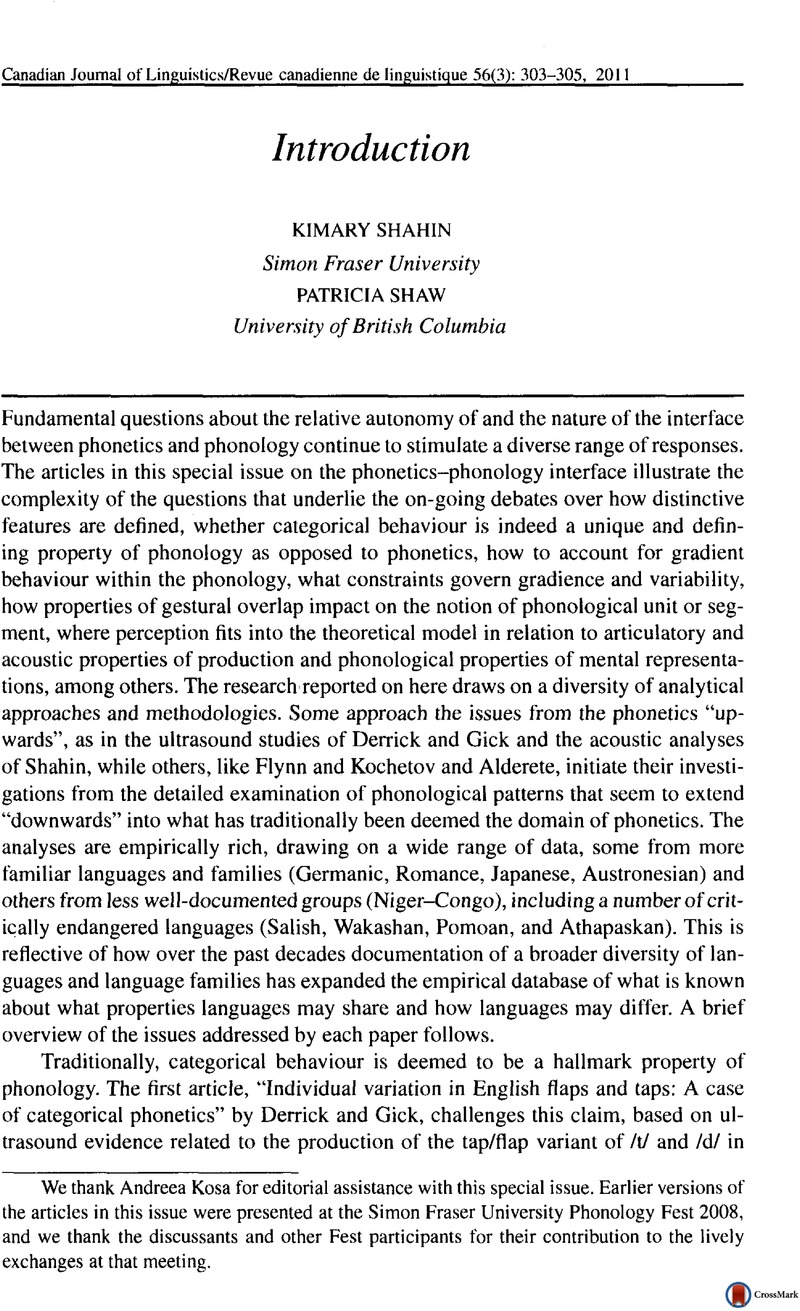No CrossRef data available.
Article contents
Introduction
Published online by Cambridge University Press: 27 June 2016
Abstract
An abstract is not available for this content so a preview has been provided. Please use the Get access link above for information on how to access this content.

- Type
- Introduction
- Information
- Canadian Journal of Linguistics/Revue canadienne de linguistique , Volume 56 , Issue 3 , November 2011 , pp. 303 - 305
- Copyright
- Copyright © Canadian Linguistic Association 2011
References
Hale, Mark and Reiss, Charles. 2000. Phonology as cognition. In Phonological knowledge: Conceptual and empirical issues, ed. Burton-Roberts, Noel, Carr, Philip, and Docherty, Gerard, 161–184. Oxford: Oxford University Press.Google Scholar
Hyman, Larry M.
2008. Enlarging the scope of phonologization. University of California Berkeley Phonology Lab Annual Report, 382–409.Google Scholar
Keyser, Samuel J. and Stevens, Kenneth N.. 2006. Enhancement and overlap in the speech chain. Language
82:33–63.CrossRefGoogle Scholar
Kingston, John. 2007. The phonetics-phonology interface. In Handbook of phonology, ed. Lacy, Paul de, 435–456. Cambridge: Cambridge University Press.Google Scholar
Myers, Scott. 2000. Boundary disputes: The distinction between phonetic and phonological sound patterns. In Phonological knowledge: Conceptual and empirical issues, ed. Burton-Roberts, Noel, Carr, Philip, and Docherty, Gerard, 245–272. Oxford: Oxford University Press.Google Scholar
Stevens, Kenneth N., Keyser, Samuel J., and Kawasaki, Haruko. 1986. Toward a phonetic and phonological theory of redundant features. In Invariance and variability in speech processes, ed. Perkell, Joseph S. and Klatt, Dennis H., 426–449. Hillsdale, NJ: Lawrence Erlbaum.Google Scholar




